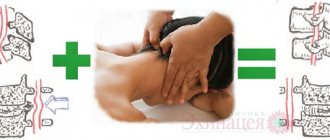Examination and treatment
Intracranial hypertension is an increase in pressure exerted by cerebrospinal fluid moving along the brain pathways.
This pathology is included in the list of the most common brain diseases and is a dangerous disease that has a destructive effect on its structures. More often, hypertension is a secondary disease that develops against the background of various factors, including traumatic or oncological etiology. According to statistics from neurologists around the world, representatives of the stronger sex are more susceptible to intracranial hypertension, although in children it is diagnosed with equal frequency in both boys and girls.
Important: high blood pressure can be provoked not only by cerebrospinal fluid, but also by arterial blood or the substrate of a brain tumor.
Get diagnosed with intracranial hypertension at Clinic No. 1:
- Fundus examination
- Ultrasound of cerebral vessels
- X-ray of the head
- EEG
- Angiography
For one-time payment for services - 20% discount
Call
Causes of blood pressure abnormalities
In the CIS countries, increased intracranial pressure is a common diagnosis. It is prescribed for various disorders of the central nervous system in adults and children, and a simple set of therapeutic procedures allows you to quickly normalize the condition and maintain it in the future. However, changes in ICP levels are actually a symptom of a number of dangerous diseases that cannot be treated at home. When making a diagnosis, it is important to pay attention to the patient’s complaints, collect a complete picture and determine whether the pressure inside the skull is really pathologically reduced or increased and threatens human health. In most cases, if ICP is indeed elevated, the patient has a number of additional clinical signs that can be used to identify serious disorders of nervous activity.
Increased intracranial pressure
Increased intracranial pressure is a dangerous phenomenon. It accompanies diseases that threaten the patient’s life. These include:
- inflammatory diseases of the membranes of the brain, including those of infectious origin (meningitis);
- serious poisoning with toxins - in this case there is an increase in the amount of blood in the vessels of the brain and its stagnation;
- traumatic injuries of brain tissue (closed craniocerebral injuries);
- various neoplasms in the cranial cavity;
- hematomas located between the membranes of the brain;
- hydrocephalus is a dangerous disease characterized by impaired outflow of spinal fluid and its accumulation in the ventricles of the brain;
- severe metabolic disorders (advanced forms of diabetes).
In children under the age of 10-11 years, any signs of intracranial hypertension are often associated with birth injuries. Indeed, this factor in history can provoke cerebral hypoxia and various neurological disorders. However, it is important to exclude the possibility of developing hydrocephalus - this disease manifests itself at an early age and is characterized by a rapid increase in the volume of the head. Since the anatomical norm may differ in children (a large head is not a cause for concern), the diagnosis is made based on frequent measurements of head circumference and analysis of the rate of its growth. Signs of increased intracranial pressure in adults are a reason to undergo an examination and exclude the possibility of neoplasms in the cranial cavity.
Reduced pressure
Decreased intracranial pressure is a less dangerous condition. This indicator decreases in certain situations that can be corrected by a set of procedures or by taking medications. No surgical intervention will be required. The reasons for its decrease include:
- production of spinal fluid in insufficient quantities or acceleration of its reabsorption into the blood;
- increasing the permeability of the barrier, which ensures the exchange of fluid between the cells of the central nervous system and the bloodstream;
- decreased tone of blood vessels;
- diseases of the spinal column, especially the cervical region affects the indicator of intracranial pressure;
- any conditions that are accompanied by pathological dehydration of the body: poisoning, taking diuretics, allergic reactions and others.
In some diseases, there is a decrease in the rate of blood circulation through the vessels of the brain. They can also be a consequence of birth injuries, vascular pathologies, and congenital abnormalities of the brain structure. If not treated promptly, this condition can also cause dangerous complications.
Reasons for development
Under normal conditions, a healthy person's brain is surrounded by intracerebral fluid. This fluid moves non-stop at a certain speed, affecting the brain with a certain level of normal pressure. At the same time, an important point to understand is the “circulation” of the cerebrospinal fluid: part of the liquid is absorbed into the blood, while new cerebrospinal fluid is produced, replacing the total volume of fluid to a normal value. If the absorption of cerebrospinal fluid slows down, or its production becomes excessively active, the volume of liquid at some point begins to exceed the norm. An obvious consequence of this will be an increase in pressure during the movement of intracerebral fluid.
Intracranial hypertension can also develop in newborns. The reason for this, as a rule, is hydrocephalus of any etiology. Among newborns with fluid hypertension in the skull, a large percentage of premature babies.
In adult patients, intracranial hypertension can develop even against the background of swelling of the brain tissue, for example, as a result of traumatic brain injury, meningitis - an infection of the meninges, sarcoidosis, or other diseases of the brain or heart.
Also, long-term use of corticosteroids, hormonal contraceptives, and antibiotics can lead to an increase in cerebrospinal fluid pressure inside the skull.
Physiological norm and determination of intracranial pressure
The human skull is a cavity in which the brain is located. To protect it from injury, as well as to maintain its normal operation, there are sections filled with liquid. First of all, the liquid fraction is represented by blood, which is located in the vessels. There is also cerebrospinal fluid (cerebrospinal fluid) present here. It is synthesized in special choroid plexuses and enters the skull through the spinal canal, then is located in the ventricles of the brain and is removed through the venous sinuses. This fluid is necessary for the transport of oxygen and nutrients that are used by brain cells to maintain performance.
Intracranial pressure is a complex value that consists of several factors:
- brain pressure (normally it occupies no more than 85% of the skull space);
- blood - up to 8%;
- spinal cerebrospinal fluid - up to 7%.
Blood and cerebrospinal fluid are in constant motion. If blood circulates through the vascular bed, then spinal fluid moves through the ventricles of the brain and along the spinal canal. These fractions are continuously synthesized, enter the cranium and move further along the vascular bed. When they are in the skull, they put pressure on the inside of the blood vessels and ventricles of the brain. For this reason, intracranial pressure is present in every person, and its value can change every minute. An increase or decrease in this indicator may indicate both pathology and normal physiological processes in the human body.
Symptoms of the disease
Increased intracranial pressure can be recognized by various signs.
- Headache of varying intensity. More often at night, since in a supine position the production of cerebrospinal fluid is activated and its absorption slows down.
- With increased cerebral fluid pressure, a person suffers from nausea and frequent vomiting. Moreover, this is not related to the digestive process. What is typical only for this pathology is that even after vomiting, relief does not come, since the pressure in the brain does not change.
- Nervousness, irritability for no reason, sometimes bordering on aggression, fatigue, even if this condition was not preceded by significant physical activity. This symptomatology is explained by the negative impact of hypertension on a person’s psycho-emotional state.
- Fluctuations in blood pressure, increased sweating, tachycardia, fatigue, chills, short-term fainting, and other symptoms inherent in vegetative-vascular dystonia can also develop when cerebrospinal fluid puts excessive pressure on the brain.
- With chronic intracranial hypertension, a person's sexual desire decreases. This is typical for patients of any gender.
Get diagnosed with intracranial hypertension at Clinic No. 1:
- Fundus examination
- Ultrasound of cerebral vessels
- X-ray of the head
- EEG
- Angiography
For one-time payment for services - 20% discount
Call
Symptoms of increased intracranial pressure
The symptoms of increased blood pressure are so vivid and strong that they affect the entire life and activity of the individual:
- pressing pain spreading to all areas;
- pain that occurs in the morning and intensifies throughout the day, not relieved by conventional analgesic medications;
- signs of sleep disturbance;
- nausea, vomiting;
- slowdown in heart rate;
- sudden deterioration of vision;
- lack of ability to focus on small objects;
- decreased memory and attention.
If the headache occurs due to a significant pathology, the patient should maintain bed rest. Otherwise, dizziness, lapses of consciousness, and memory loss begin.
With reduced ICP, symptoms are observed:
- constant mood swings, lethargy, indifference, asthenia, dissatisfaction, fatigue;
- vertigo, sometimes fainting after minor sports activities;
- headache;
- with a general lack of fluid, blood pressure simultaneously decreases;
- decreased ability to see, cloudy spots in the eyes;
- lightheadedness, abdominal pain;
- pain in the heart area.
Diagnosis of high cerebral pressure
Patients with suspected hypertension are immediately prescribed an MRI. Also carried out:
- Fundus examination is a painless diagnostic method that reveals papilledema, a characteristic sign of hypertension.
- Doppler ultrasound examination of cerebral vessels will reveal if there are “obstacles” in the path of cerebrospinal fluid flow.
- Head X-ray is a simple and accurate method for diagnosing the condition of the brain; it can be performed with or without contrast.
- An electroencephalogram (EEG) is a non-invasive test aimed at measuring the electrical activity of brain cells.
- Angiography.
Craniosacral methods for relieving ICP
At first, the most superficial opinion, it seems that a session with a specialist in craniosacral therapy looks like an elementary massage of the head and face area. However, this statement is incorrect.
Real healing of pressure on the brain using a procedure can only be carried out by a modern qualified osteopath with extensive experience, who can listen to the so-called “primary rhythm” and adjust the techniques of the hands and fingers to it. In addition, the doctor must perfectly know the structure of the human brain. High efficiency and security of the session are guaranteed only if these conditions are met.
During the massage, the client is placed on a horizontal couch. Then the specialist begins to slowly press on the scalp with his fingers. With such movements, the intracranial pressure of the brain is first opened and then corrected. The doctor's movements are very light, painless, smoothing, almost imperceptible. There will be no discomfort during the session.
On the contrary, almost 100 percent of people indicate pleasant sensations: the disease goes away and fresh strength increases. The first procedure immediately entails that pain, increased pressure on the brain, and visual disturbances are relieved. The whole condition is normalized. The therapist spends about one hour, but this time is enough to achieve the identified effect in ICP and maintain it. Then you will need several sessions, because ICP requires quite a long treatment.
The above approach is absolutely effective in healing the symptoms of any disease. It is absolutely not dangerous to health and becomes the only possible option of salvation when the patient is not ready to take medication for any reason.
Treatment of high intracranial pressure
Living with increased intracranial pressure is quite difficult, and also dangerous. If the disease is not treated, the patient develops hormonal imbalance, the nervous regulation system is disrupted, and intellectual abilities decrease.
The basis of the treatment program is the use of drugs that reduce the production of cerebrospinal fluid and activate the process of its absorption. In severe cases, doctors decide on the need for surgical bypass surgery.
Traditional treatment of pathology
It is best to treat a patient with blood pressure in a hospital setting.
At home, it should be prescribed based on the results of diagnosing hypertension. After a TBI, the patient should be given complete rest, offered light food, drink more fluids, and take anti-inflammatory drugs. In situations of hematomas and brain tumors, surgery is required.
Similar measures should be taken for hydrofecal cerebral effusion. To drain excess fluid during ICP, a catheter is installed. Liquor should be removed several times depending on the child’s growth, and the latter should be constantly monitored. Gradually, interference with blood pressure will disappear.
Treatment with medications during pathology is prescribed to make you feel better:
- hormonal anti-inflammatory drugs;
- agents that protect neurons - affect blood flow and gas exchange in the brain;
- diuretics - for the outflow of excess contents;
- osmodiuretics - reduce the volume of cerebrospinal fluid.
However, the drugs affect the intracranial disorder signal itself, and not its cause. At the same time, an important stage of treatment is the treatment of the pathogenesis of intracranial pressure.
Make an appointment with a neurologist
Experienced specialists conduct consultations in the neurological department of the private Multidisciplinary Medical Hospital. Get rid of unpleasant symptoms and prevent complications caused by increased intracranial pressure by completing a course of treatment.
Information on prices for initial and repeated paid appointments with a neurologist is presented on our website. You can make an appointment with a specialist at a convenient time by phone or using the online form on our website.
Moscow, st. Krasnodarskaya, house. 52, bldg. 2
+7
We work on weekdays and weekends from 8.00 to 21.00
How does osteopathy treat intracranial pressure?
But the best way to correct pressure on the brain is craniosacral osteopathic actions. They have this name because “cranium” in Latin means “skull”, and “sacrum” means sacrum. The word "osteopathy" also consists of two Greek words: osteo - "bone" and patio - "disease". There is an erroneous interpretation of it as something related only to bones, and doctors in this specialty are likened to chiropractors and chiropractors.
In fact, the term means that the causes of any disease consist of a disorder in the integrity of the anatomical systems of the human body.
In the forties of the last century, osteopath William Sutherland put forward the theory that small, gentle manipulation around the skull and neck leads to relief from a wide range of health problems. In the 1970s, his follower, physician John Upledger, identified a separate area - craniosacral osteotherapy.
Treatment methods have proven effective in eliminating increased cranial fluid. According to neurosonography, the number of signs indicating hypertension decreased.
Regardless of who the patient is, after surgery or not, in children and adults after this treatment there is always a decrease in pain, intracranial pressure decreases, cerebrospinal fluid decreases, and an improvement in condition appears. On the fourth or fifth day of treatment, a patient with ICP usually achieves stabilization of hypertension, normalization of well-being, and pain subsides.
An osteo-practitioner leads to a reduction or elimination of obstacles to blood flow and lymphatic drainage of blood vessels, and adjusts the circulating cerebrospinal fluid. The number of manifestations of pathology decreases, headaches, nausea, increased pressure in the eyes, visual impairment, and tinnitus go away.
The above is also relevant in order to correct the baby’s intracranial pressure. You need to see an experienced doctor as soon as possible. The earlier treatment is started, the stronger the lasting effect is achieved. In many situations, it is possible to make people’s quality of life much better, help them get rid of migraines and poor sleep, removing obstacles to the normal flow of cerebrospinal fluid.
To do this, they use special options for working on the structures of the skull, the membranes of the brain, blood vessels, and so on, worked out and verified over several decades. Thanks to the doctor’s manipulations, clients are able to avoid taking medications, many of which have side effects, and recover from pressure on the human brain in a natural and safe way.
The principles of osteopathy are also good after surgery or a course of medical pills. They help neutralize possible symptoms of ICP and consolidate a positive outcome. As a result of gentle bodily influence, pathologies in adults that have their roots in distant childhood and during childbirth are eliminated.
Craniopathy techniques are aimed specifically at eliminating the cause of hypertension; they give impetus to independent rehabilitation of the body after ICP. Following this, the symptoms of pain and fluid pressure on the brain gradually disappear. This is where they differ from classical medicine. The important thing is that the treatment is carried out without pain, drugs, the use of additional instruments, noise and fear for the small patient.
Osteopathy sessions are healing methods performed only with the help of manual influences on the brain, with proven effectiveness in eliminating increased intracranial pressure.
Symptoms
The pathological condition can manifest itself in different ways. The main signs of increased blood pressure are usually accompanied by characteristic symptoms of the primary disease. In addition, a lot depends on the age of the child. Symptoms and treatment of infants and schoolchildren have their own characteristics.
It makes sense to distinguish between two age categories that have differences in the manifestation of increased intracranial pressure. The first group is children who have not yet turned one year old. The second is children older than this age. Why is one year of age a cutoff point? By this age (give or take a few months), the last “fontanelle” on the baby’s head usually heals. “Fontanelle” is a section of the skull in which there are openings between the bones.
How to determine increased intracranial pressure in children under one year of age? There are many symptoms, but each of them is not an unambiguous indication of a dangerous diagnosis; they can only be used to suspect the presence of a pathology in a child.
- The child cries and screams for a long time for no apparent reason, behaves restlessly, and is nervous.
A characteristic sign of pathology is frequent crying at night. It is at this time, when the baby must be in a lying position for a long time, the outflow of blood through the veins of the brain is inhibited, the blood stagnates, overflowing the vessels, and disrupts the outflow of cerebrospinal fluid. The pressure in the skull increases.
- The child has poor, short-term sleep: he has difficulty falling asleep, constantly wakes up, and cries.
The explanation is the same: when the baby lies, the movement of blood from the head slows down.
- Under the thin skin on the baby's head, you can see a pronounced network of blood vessels.
This happens because when the pressure on the brain increases, the venous vessels collect a large amount of blood, which cannot drain away. As a result, the veins located under the skin become clearly defined.
- The child began to eat poorly.
The process of extracting milk from the mother's breast is a very labor-intensive task for the infant. When it “works,” it naturally begins to increase. If the baby is healthy, this will not cause him any discomfort. But in the case of an existing fact of increased pressure inside the skull above normal, the additional load makes itself felt. The baby experiences pain and discomfort, so he abandons the breast. As a result, you can notice a lag in weight in such a child.
- The baby constantly burps, and profusely. There are frequent attacks of vomiting. Such symptoms indicate the possibility of developing intracranial hypertension.
But in this case, we cannot exclude the presence of other causes, which are also characterized by such a symptom: overeating, air entering the esophagus.
- Upon examination, the doctor may find that the “fontanelles” have become convex and swollen. There is also often a disproportionate increase in head volume. The forehead especially grows. The sutures of the cranial bones begin to separate.
The normal volume of the head should be less than the volume of the baby's chest, starting from 6 months. If this does not happen, and the head is still large, this should serve as an alarming signal. Violation of proportions can be noticed in dynamics with regular head measurements.
- The baby’s development is inhibited, retardation is observed both in physical and mental parameters.
- There is a disorder in the functions of the nerves responsible for the movement of the eyeballs. This phenomenon is commonly called Graefe syndrome.
This sign can be noticed by the spontaneous lowering of the eyeballs; a white stripe (sclera) is clearly visible in the gap between the upper eyelid and the iris of the eye.
Due to the external similarity of the phenomena, this symptom is also called the “setting sun symptom.”
It would also be advisable to consider the symptoms of the pathological condition in older children (after 6 years):
- frequent attacks of nausea, vomiting may occur;
- pain in the eyeball area;
- difficulty falling asleep;
- dizzy;
- seeing double;
- chronic fatigue, lethargy, apathy;
- emotions are overflowing: aggression, tearfulness, whims for no reason;
- convulsive syndrome;
- headache in the evenings and at night;
- attention is scattered, the child has become forgetful.
Signs of intracranial pressure in a child
In childhood, the symptoms of ICP may be similar to other diseases and require careful diagnosis. The cause is not always an excess of cerebrospinal fluid in the brain. Characteristic signs of intracranial pressure in a child:
- restless behavior, especially in the evening and at night;
- sleep problems;
- nausea, regurgitation in infants;
- refusal to eat;
- increased head size;
- Graefe's symptom - lowering of the eyeballs;
- dilation of veins under the scalp;
- developmental delay.
Intracranial pressure in infants
There are several symptoms that should cause parents to sound the alarm. How does intracranial pressure manifest in infants, which is dangerous? It is necessary to urgently contact a neurologist if you have:
- pulsation, swelling of the fontanel, especially at rest;
- periodic twitching;
- uneven muscle tone;
- systematic seizures;
- open eyes during sleep;
- lethargy;
- freezing spells;
- involuntary movements of the pupils;
- loss of consciousness.
Intracranial pressure increases in infants in the evening, which is associated with a slow outflow of venous blood during a long horizontal position of the body. This leads to anxiety and tearfulness. Signs of ICP in a baby:
- divergence of cranial sutures;
- refusal to feed;
- regurgitation;
- nausea;
- lowering of the eyeballs;
- visible veins on the head, overflowing with blood;
- slow physical development;
- slight weight gain;
- severe vomiting.
Convex forehead on a baby
One of the symptoms of intracranial hypertension in a child is a significant increase in head size. The appearance of a convex forehead in an infant is due to the widening of the opening between the bones of the skull due to increased ICP. The following picture is observed:
- the forehead is disproportionate to the size of the head and has a convex shape;
- A pronounced overhang forms on the back of the head.
Intracranial pressure in adolescents
At older ages, with increased ICP, other manifestations occur. The following symptoms of intracranial pressure in adolescents are observed:
- double vision;
- increased heart rate;
- severe headache at night, in the morning;
- bruises under the eyes;
- apathy towards previously loved activities;
- vomit;
- drowsiness;
- the appearance of strabismus;
- convulsions;
- the appearance of flashes before the eyes;
- fast fatiguability.
Fundus of the eye with intracranial pressure
How to diagnose increased intracranial pressure? One of the research methods is checking the fundus. With the disease, the outflow of blood is disrupted, and indirect signs of ICP are observed. The ophthalmologist examines the fundus of the eye for intracranial pressure and detects symptoms in the child:
- increased tortuosity of blood vessels;
- spasm of the arteries;
- dilation of retinal vessels;
- swelling of the optic discs;
- changing their fabrics, contours, colors.









